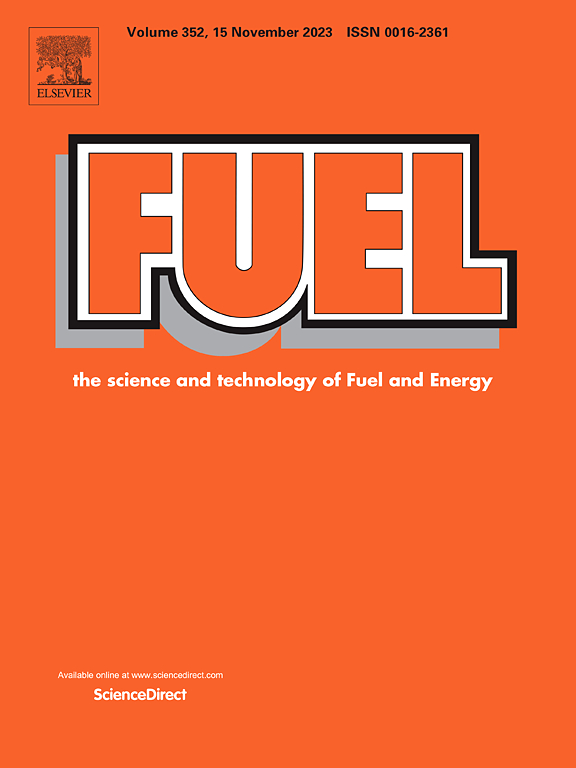Theoretical investigation of CO2/N2-enhanced coalbed methane recovery in coal-derived asphaltenes
IF 6.7
1区 工程技术
Q2 ENERGY & FUELS
引用次数: 0
Abstract
The global energy supply relies heavily on fossil fuels, contributing significantly to greenhouse gas emissions and climate change. Despite efforts to reduce CO emissions through renewable energy, substantial amounts continue to be released. Coal bed methane recovery (CBM) presents opportunities in this regard, necessitating a thorough understanding to minimize associated risks. To gain better insight into N-ECBM and CO-ECBM processes, an asphaltene model was selected, heteroatoms (CH, NH, CO, S) were incorporated into it, and the adsorption of CO, CH, and N was investigated. We utilized grand canonical Monte Carlo (GCMC), molecular dynamics (MD), and density functional theory (DFT) for this purpose. The results show that CO has the highest adsorption energy, with values of up to −12 kJ/mol on asphaltene models, compared to −8 kJ/mol for CH and −7 kJ/mol for N. Temperature was found to reduce adsorption capacity, while increased pressure positively affected gas uptake, agreeing with experiments. The isosteric heats of adsorption for all gases were below 10 kJ/mol, indicating a physisorption process. Additionally, the self-diffusion coefficient increases with temperature in accordance with experiments, with CO displaying the lowest value among the studied gases, suggesting a stronger affinity to the asphaltene surface. DFT analysis showed that the adsorption of gases on asphaltene molecules was a physical process (van der Waals interaction). These findings highlight the suitability of asphaltene structures for CO-ECBM, where CO can be used to displace methane in coal seams, aiding both methane recovery and greenhouse gas mitigation. The strong interaction between CO and asphaltene suggests that asphaltene-based adsorbents could be developed for more efficient carbon capture and storage technologies.

求助全文
约1分钟内获得全文
求助全文
来源期刊

Fuel
工程技术-工程:化工
CiteScore
12.80
自引率
20.30%
发文量
3506
审稿时长
64 days
期刊介绍:
The exploration of energy sources remains a critical matter of study. For the past nine decades, fuel has consistently held the forefront in primary research efforts within the field of energy science. This area of investigation encompasses a wide range of subjects, with a particular emphasis on emerging concerns like environmental factors and pollution.
 求助内容:
求助内容: 应助结果提醒方式:
应助结果提醒方式:


